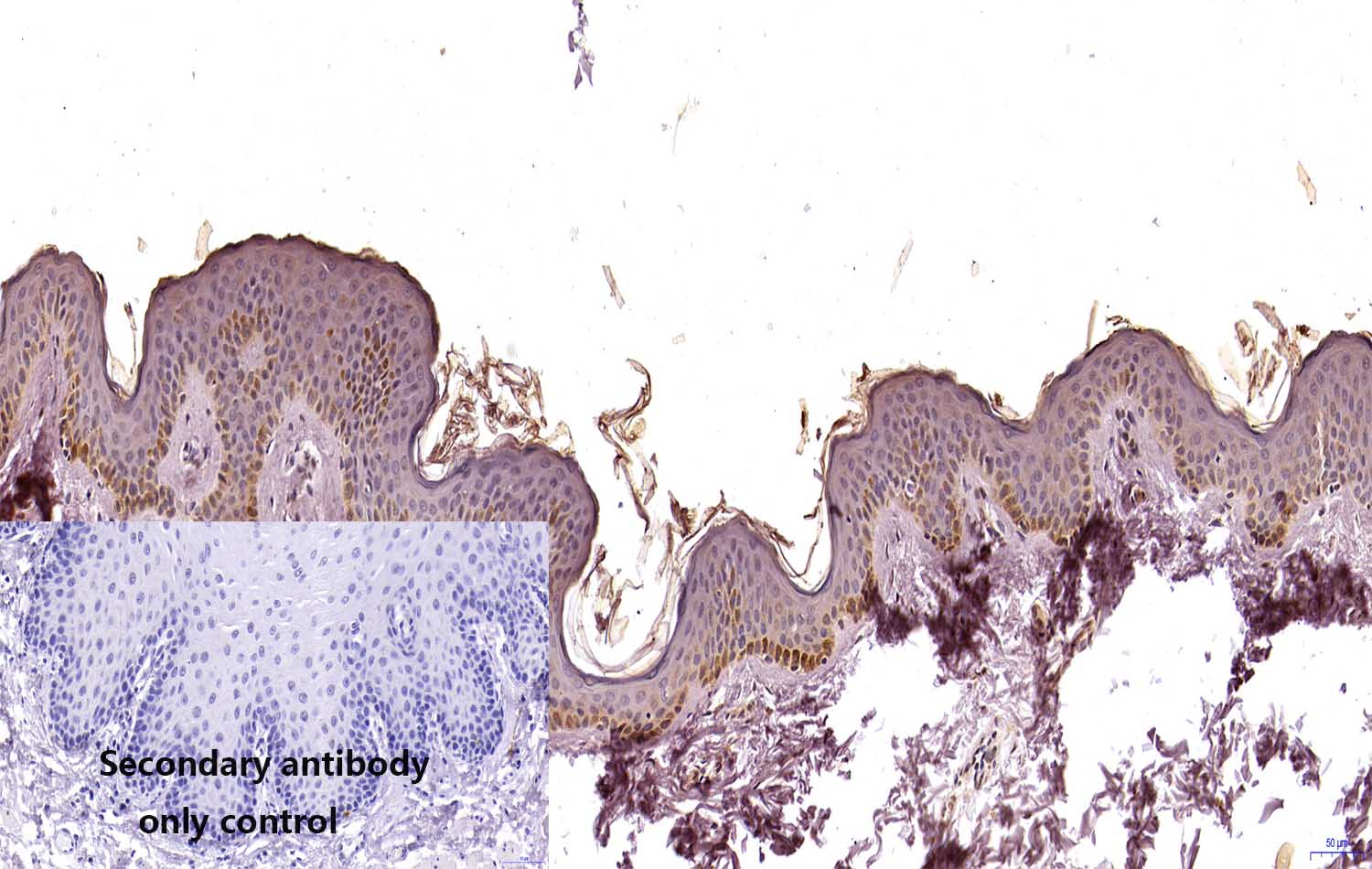
产品名称:Anti-CD5 Antibody, Mouse Monoclonal, G8T
克隆号:G8T
抗体亚型:/
经验证的应用:/
交叉反应:Predict reacts with: Human/Mouse/Rat
特异性:/
免疫原:A synthetic peptide of human CD5
制备方法:Produced in mouse immunized with CD5, and purified by antigen affinity chromatography.
来源:Monoclonal Mouse IgG
纯化:Immunogen affinity purified
缓冲液:Supplied in PBS, 50% glycerol and less than 0.02% sodium azide, PH7.4
偶联物:Unconjugated
浓度:Liquid
运输方式:This antibody is shipped as liquid solution at ambient temperature. Upon receipt, store it immediately at the temperature recommended.
储存条件:This antibody can be stored at 2℃-8℃ for one month without detectable loss of activity. Antibody products are stable for twelve months from date of receipt when stored at -20℃ to -80℃. Preservative-Free. Avoid repeated freeze-thaw cycles.
图片:
Figure1.Immunohistochemistry (Formalin/PFA-fixed paraffin-embedded sections) analysis of human spleen sections labelling CD5 with purified MA01397HuM10-G8T at 30ug/ml dilution . Heat mediated antigen retrieval was performed using Heat mediated antigen retrieval using citrate buffer (PH6.0). Tissue was counterstained with Hematoxylin. Mouse specific IHC polymer detection kit HRP/DAB secondary antibody was used at 1:2000 dilution. PBS instead of the primary antibody was used as the negative control.
背景信息:CD5. CD5, also known as Leu-1, Ly-1, and T1, is a 67 kDa transmembrane glycoprotein in the scavenger receptor superfamily (1). Mature human CD5 consists of a 348 amino acid (aa) extracellular domain (ECD) with three scavenger receptor cysteine-rich (SRCR) domains, a 30 aa transmembrane segment, and a 93 aa cytoplasmic domain (2). Within the ECD, human CD5 shares 55% aa sequence identity with mouse and rat CD5. The 52 kDa ECD can be cleaved from the cell surface and circulates in the serum (3). CD5 has been shown to interact homophilically, with CD72 on B cells, and with beta-glucan components of fungal cell walls (4‑6). CD5 expression on developing thymocytes is positively regulated by signaling through the T cell antigen receptor (TCR) and is up‑regulated on tolerized peripheral CD4+ cells (7, 8). It inhibits TCR signaling and promotes T cell nonresponsiveness and survival (8‑10). CD5 signaling inhibits the generation of regulatory T cells but promotes the development of Th17 cells (11, 12). Within the B cell lineage, CD5 is expressed on B-1a cells, anergic B cells, and IL-10 producing regulatory B cells (13‑16). Similarly to on T cells, it negatively regulates signaling through the B cell antigen receptor and supports peripheral B cell survival, anergy, and tolerance (13, 14, 16). B cells can produce an intracellularly-retained form of CD5 which lacks the signal peptide and a portion of the first SRCR domain (17). CD5 is also involved in the cellular entry of hepatitis C virus into T cells (18).
全称:T-cell surface glycoprotein CD5 (CD5)
说明书:待上传


